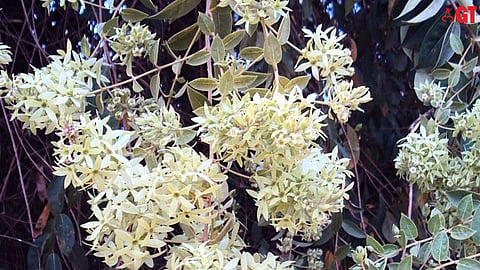

Ever since India became a republic in 1950, the Independence Day of India is celebrated in Goa together with the feast of the Assumption of Mary, the mother of Jesus, into Heaven.
Even those persons who do not believe in the assumption of Mary’s journey into the clouds, still celebrate the feast with patoleo or patoieo.
This sweet is made using ground rice or rice flour, turmeric leaves, grated coconut and jaggery – originally made of coconut neero, but now also from sugarcane juice, or even using refined sugar as a sweetener.
Both these traditions bring the coconut tree into focus: for this is the month when coconut trees are to be manured with the green leaves and organic or chemical fertilizers.
The world is going back to traditional organic practices and slow food. And, so is Goa.
‘FERTILIZER’ PLANTS FROM FORESTS
In Goa, the traditional head-load of green leaves of each coconut tree came from the Uski or Ukshi, botanically known as Getonia floribunda. To most of us in Goa, it is a shrub because it is lopped annually for green leaf manure.
However, Getonia is actually a vine that can be seen growing on forest trees, including teak, all over Canacona (in South Goa), Assam, the North-Eastern states of India, Malaysia and islands of Indonesia.
With bunches of papery flowers resembling the Hortensia or bougainvillea, this plant is known to enrich the soil around its roots. The ‘Uskechi mati’ is the much sought after ‘garden soil’ in Goa.
The ‘private forest’ lands and ‘green cover’ areas, as defined in the Regional Plan 2021, are under all kinds of threat in the coastal talukas and even in the hinterland, where even the notified Wildlife Sanctuaries (WLS) are not even safe for the tigers.
The Glyricidia sepium is the new Saareachem zadd or manure tree. It is cultivated along the boundaries of coconut gardens to provide the green leaves for manure. They have the added advantage of being a repellent for rats – a problem for coconut crop.
Rock phosphate and muriate of potash, both mined minerals from the good earth, complete the nutrient requirement of the coconut tree, which was earlier met with bone meal, fish meal and wood ash. All this is applied in a ring, a foot deep and a foot wide, one to one-and-half metre away from the tree trunk.
AGRI COLLEGE SCENE IN GOA
A piece of good news is that the state has a new Goa College of Agriculture, under the aegis of the State Agriculture Management Extension Training Institute (SAMETI), a Government-managed ‘society’.
The collapse of the Don Bosco College of Agriculture, Sulcorna, will soon be like a hiccup in the progress of agricultural education in Goa, as was the end of the vocational course in floriculture at the school level. The Goa College of Agriculture is located at Ela Farm, in Old Goa.
Some of the seniors from Sulcorna have already made their mark. The ‘Plant Utsav 2022’ and the Konkan Fruit Fest 2023 has proved their organisational abilities. We have a ‘Krishi Ratna’, a pretty renderina tapping toddy, and a ‘Business Diva’ for the best start-up among the alumni.
They are now collaborating with the award-winning Green Heritage Eco Club of St Francis Xavier School, Siolim, North Goa, to add the sweetness of honey to the 31st annual ‘Festival of Plants and Flowers’ to be held from August 26 to 28, with competitions for the best honey produced in Goa and a demonstration in beekeeping in association with the Khadi & Village Industries Board (KVIB), Goa. It has been my privilege to mentor them to make Goa greener, naturally and profitably.
The author is a former Chairman of the GCCI Agriculture Committee, CEO of Planter's Choice Pvt Ltd, Additional Director of OFAI and Garden Superintendent of Goa University, and has edited 18 books for Goa & Konkan